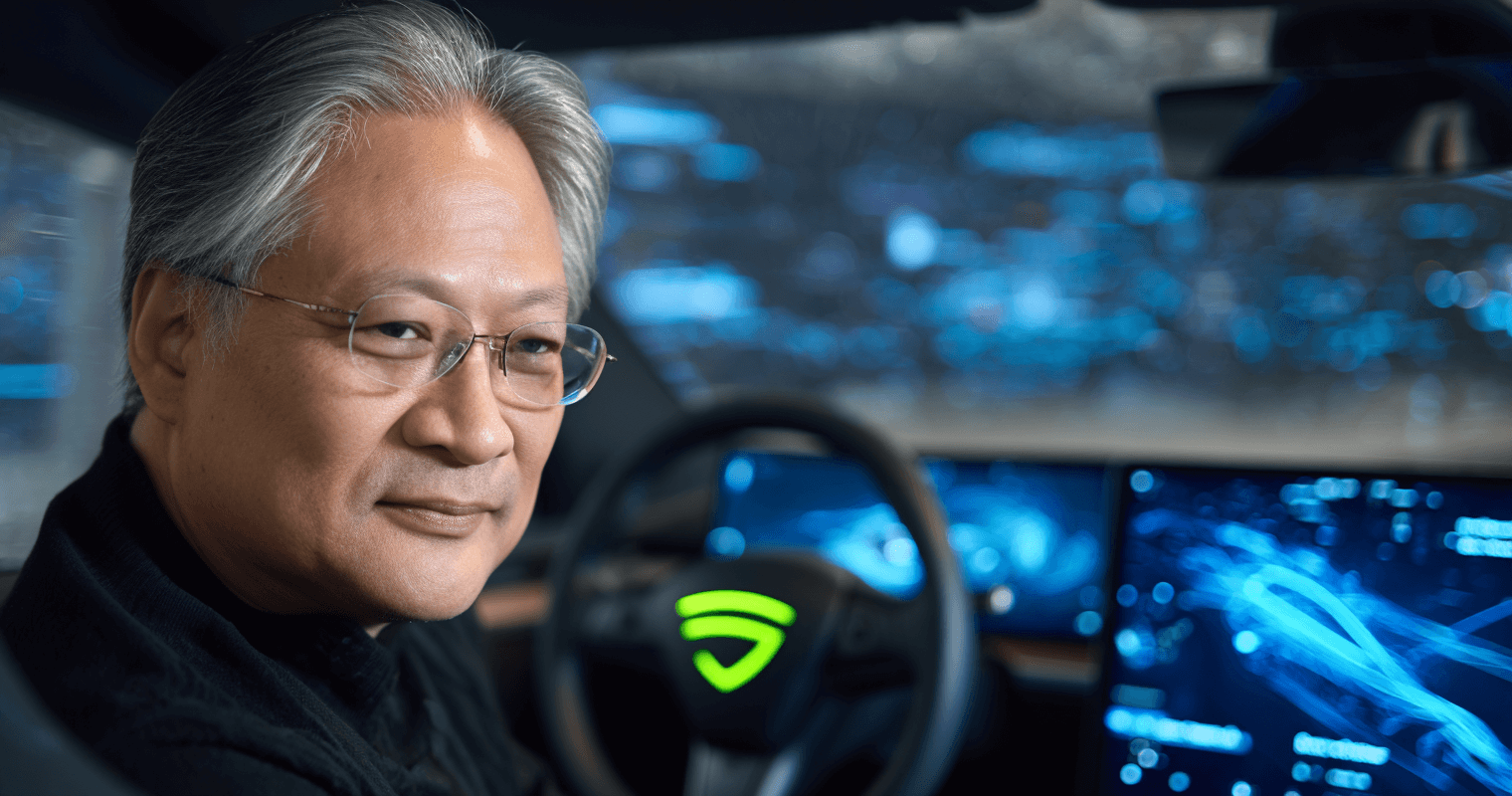
NVIDIA’s Tesla-Killer?
NVIDIA has just released its Alpamayo open-source AI models for autonomous driving. But here’s why Tesla isn’t nervous…


Another incredible leap has happened for the aerospace industry…


Early this morning in the wee hours just before sunrise, about 700 kilometers above Earth, the hatch of a Dragon spacecraft opened…
And the mission commander stepped out into the cold vacuum of space.

Was it another NASA mission?
No. It wasn’t.
They didn’t even ask NASA for permission. They just got it done.
The mission, Polaris Dawn, launched early Tuesday morning, culminating this morning with the first commercial extravehicular space walk in history.
The mission was funded by Jared Isaacman, the founder, chairman, and CEO of Shift4 Payments (FOUR) – a payments company that went public in June 2020 and made Isaacman a billionaire.
This isn’t Isaacman’s first trip to space.
In September 2021, Isaacman commissioned the first commercial spaceflight in history that did not include a single person from any government agency.
Of course, none of this would have been possible without the incredible aerospace technology developed by the still-private aerospace company SpaceX.
Mission control for Polaris Dawn is at SpaceX facilities, not at some NASA location.

SpaceX Mission Control Center | Source: SpaceX
And not surprisingly, the video telemetry was powered by SpaceX’s broadband satellite network, Starlink, which is what is delivering the video footage to Earth from space.
It’s such a remarkable development that would have been unthinkable even a decade ago. That a private company could conduct a multiday commercial mission in space, conduct a spacewalk, and do this entirely without any government funding, technology, or support.
Not only is the mission good business for SpaceX, it has provided the aerospace company the opportunity to further test its Starlink network for space-based communications.
And SpaceX was also able to put its refined and modern extravehicular activity (EVA) suit to use for the first time.
Testing of the EVA suit was conducted by two of the members of the mission, and while the two members remained within the Dragon spacecraft, they were all exposed to the vacuum of space because the entire Dragon spacecraft was depressurized to prepare for the spacewalk.

SpaceX’s Extravehicular Activity (EVA) Suit | Source: SpaceX
SpaceX’s incredible success comes at an odd time in the industry.
Both NASA and its supplier, Boeing, suffered a major embarrassment when two astronauts got stranded on the International Space Station (ISS) in June.
They’re still there. Stuck. And it’s because the Boeing Starliner spacecraft was not deemed to be safe to return the astronauts home.
Five helium leaks were discovered in the Starliner’s propulsion system while docked to the ISS. They could not be resolved.
And if that wasn’t bad enough, at the beginning of this month, the Starliner began to “emit strange noises.” It turned out that the noises were coming from a faulty feedback loop with a speaker on the Starliner. In other words, nothing serious… but embarrassing nonetheless, after months of being marooned on the ISS.
On September 7, the Boeing Starliner spacecraft returned to Earth in one piece, but without the two astronauts. It’s a good thing, too…
When Starliner undocked from the ISS, one of the 12 control jets failed to ignite, and there was a software glitch that caused Starliner’s navigation system to go down briefly during reentry.

Not surprisingly, there is already talk as to whether or not Boeing should just get out of the manned spaceflight entirely. Its program is billions of dollars over budget, and there has been nothing but delays and problems along the way.
Meanwhile, SpaceX has been providing incredible services to NASA…
SpaceX is racking up one win after the other for a tiny fraction of historical costs to NASA.
In fact, NASA called on SpaceX to return the two stranded astronauts to Earth early next year. In the meantime, the astronauts just won the “lottery,” thanks to Boeing’s failures – in the form of a fun-filled, life-changing, extended stay in space on the ISS.
These latest developments are not happening in isolation.
It’s symbolic of a changing of the guard.
Incumbents like Boeing – which has become riddled with bureaucracy and ineptitude and struggles to innovate (just like Intel in the semiconductor industry) – have ceded leadership to private companies like SpaceX and RocketLab (RKLB). (We covered Intel’s failures in yesterday’s The Bleeding Edge – Farewell, Intel.)
RocketLab, while a fraction of the size of SpaceX, has been on a roll as well.
It booked $160 million in revenue in the second quarter of this year, a 71% increase year over year. And it has a backlog of more than $1 billion in future launch revenues.
RocketLab with its Electron rocket specializes in launching smaller payloads to space, carrying as much as 300 kilograms (661 pounds) to low earth orbit. The team at RocketLab already has 52 launches to date, deploying 192 satellites to Earth’s orbit.
RocketLab’s ascent in the industry now represents 64% of all non-SpaceX orbital U.S. launches this year.
There are many more companies like RocketLab that represent a new breed of aerospace company, both public and private. They are already redefining what is possible with the emerging space economy.
This is an entirely new, multibillion-dollar industry in the making. And we have the pleasure of having a front-row seat.
What’s next?
SpaceX’s highly anticipated test launch of Starship 5 – which has been ready to go since August – is the company’s most ambitious launch to date.
SpaceX intends to return the Super Heavy booster to Earth after launch…
And catch it in mid-air using the Mechazilla tower to demonstrate not only reusability… but ultimately the ability to catch, restack, test, and relaunch rockets in a matter of hours.

Starship boosters will be able to return to launch site for reuse | Source: SpaceX
The Federal Aviation Administration (FAA), however, has been curiously delaying the approval for the launch.
The situation has become so absurd that SpaceX had to issue a statement on Tuesday about the drama that has been taking place. The below comment encapsulates the circus. The full statement can be read here:
The licensing process has been repeatedly derailed by issues ranging from the frivolous to the patently absurd.
And then there was this gem illustrating the highly frustrating reality of what SpaceX is being put through…
Unfortunately, we continue to be stuck in a reality where it takes longer to do the government paperwork to license a rocket launch than it does to design and build the actual hardware. This should never happen and directly threatens America’s position as the leader in space.
It’s hard for us to not be suspicious about the timing of these intentional delays by a government agency…
One can’t help but wonder: Are the delays less about the U.S. government saving face on its failed space mission?
Do they have more to do with what it means to hand yet another win to SpaceX…
Or worse, from the government’s perspective, handing another win to the man behind it?
Why is SpaceX CEO Elon Musk’s stance on freedom of speech – a constitutional right – so controversial? Why is it somehow a bad thing for the country that he is willing to donate his time and genius to improve government efficiency? Why the subtle thwarting?
This must stop. We want to innovate and push what’s humanly possible.
Progress must be made.
Our future is bright, as long as politics get out of the way.
Starships are meant to fly.


Read the latest insights from the world of high technology.

NVIDIA has just released its Alpamayo open-source AI models for autonomous driving. But here’s why Tesla isn’t nervous…

It has taken more than 30 years to accomplish fully autonomous driving, where the passenger no longer has to...

Consumers will soon begin flocking to products and services that are intelligent… and it’s going to shake up the...